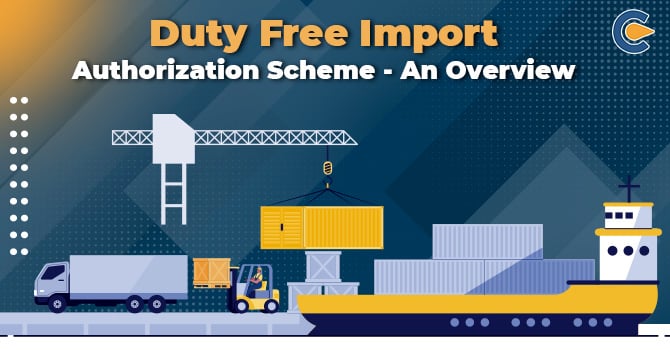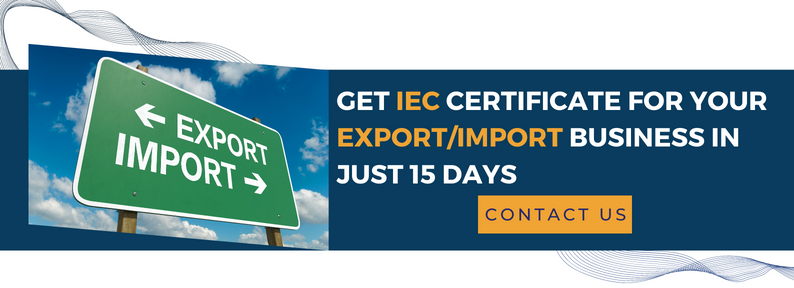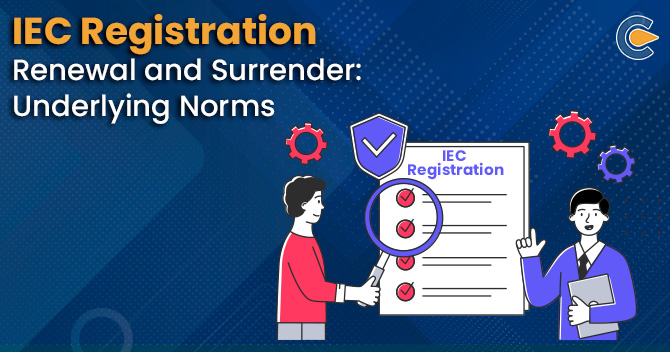On 1st May, 2006, the DFIA Scheme was introduced in place of the DFRC (Duty-Free Replenishment) Scheme and it’s similar to the AA (Advance Authorisation) Scheme with certain differences. A Duty Free Import Authorisation Scheme is issued to allow duty-free import of inputs which are utilised in the manufacture of an export product, energy, fuel, making normal allowance for wastage, catalyst, etc. Many are utilised in the course of their use to get the export product.
The DGFT (Director General of Foreign Trade), by means of Public Notice & also public interest, can exclude any product(s) from the scheme. The Authorisation shall be issued on the norms of inputs & export products or items provided under the SION (Standard Input & Output Norms). Hence, the import entitlement should be limited to the quality mentioned in SION.
Earlier, Duty Free Import mandatory spares to 10% of the CIF Value of Authorisation, which is needed to be supplied or exported as the resultant product, may also be allowed under the scheme. Such Authorisation may be issued either to a merchant exporter/manufacturer exporter tied to a supporting manufacturer. The Duty Free Import Authorisation’s details and its changes to previous FTP (Foreign Trade Policy[1]) 2014-2019 is explained under the new FTP of India 2015-2020.
What are the duties exempted under Duty Free Import Authorisation Scheme?
- Only the payment of BCD or Basic Customs Duty is exempted under this scheme;
- Compensation Cess and IGST are not exempted under the Duty Free Import Authorisation Scheme.
Criteria of MVA (Minimum Value Addition)
The MVA of 20% is compulsory to be required to be achieved. But, Appendix 4C of the Advance Authorisation (AA) recommends products that require higher value addition; for such listed products or items, such higher value addition shall be applicable Duty Free Import Authorisation.
Eligibility Criteria under DFIA Scheme
- The Duty Free Import Authorisation License shall be issued on a post-export basis for those items where standard Input/output Norms are already informed;
- The applicant must apply for an application to concerned DGFT RA before commencing to export under Duty Free Import Authorisation;
- Manufacturer and Merchant exporters are entitled to apply for DFIA License. Merchant exporters have to mention the name & address of the supporting manufacturing in all the export documentation such as bill of export or Tax invoice, shipping bills as specified under the rules of GST;
- Duty Free Import Authorisation shall not be issued for an input that is subject to pre-import conditions. DFIA License shall be not issued for an actual user condition/product such as Coconut Oil, Spices, Tea, precious metals like Platinum/Gold/Silver etc.
DFIA Scheme Procedure
Following are some steps to be followed for Duty Free Import Authorisation Scheme:
Step 1: The applicant has to examine the exported product is applicable for DFIA in SION or not.
Step 2: If the export product or item is eligible under SION norms, the candidate has to file an application at the official portal of DGFT and get the File Number.
Step 3: Export must be done within 12 months from the date of issuing the file number.
Step 4: The applicant has to mention the generated file number on every export document, such as tax invoice, shipping bill, etc.
Step 5: After completion of Export Obligation, the applicant has to apply for a transferable DFIA License.
Step 6: The applicant has to submit pertinent documents such as tax invoice, E-BRC, shipping bill, etc., to the concerned DGFT RA.
Step 7: DGFT RA may examine the submitted documents and if the documents are clear and correct, the DGFT RA may issue the transferable DFIA License within 20-25 days.
Step 8: Once the License is issued from the DGFT, then the registration of the license should be done in customs for verification.
Step 9: Applicant can use the DFIA License to import/sell the license in the market.
Validity and Transferability of DFIA
- The applicant shall file an application to Regional Authority concerned before starting export under DFIA;
- Export shall be completed or finished within 12 months from the online filing date of application & generation of file number;
- While doing supply or export, the applicant shall show file number on the export documents through Airway Bill/ARE-1/Shipping Bill/ARE-3/Bill of Export; Central Excise certified Invoice;
- After completion of exports & realisation of proceeds, request for issuance of transferable Duty Free Import Authorisation may be made to the proposed Regional Authority (RA) within a period of 12 months from the export date or six months (or additional time permitted by the Reserve Bank of India for realisation) from the realisation date of export proceeds, whichever is later;
- The applicant shall be allowed to file an application beyond 24 months or 2 years from the date of file number generation as per para 9.03 of Hand Book of Procedures;
- Separate DFIA shall be given for each SION & each port;
- Exports under DFIA (Duty Free Import Authorisation) shall be made from a single port as mentioned in para 4.37 of Handbook of Procedures;
- No Duty Free Import Authorisation (DFIA) shall be issued for an export product where SION prescribes Actual User condition for any input;
- RA shall issue transferable DFIA with a validity of 12 months from the issuance date. No further revalidation shall be granted by RA.
What are some sensitive items under Duty Free Import Authorisation (DFIA)?
- Concerning resultant products requiring the following inputs, the exporter shall be required to provide declaration regarding technical characteristic, quality & specification in Shipping Bill: Alloy steel comprising Copper Alloy, Bearings, Stainless Steel, Aromatic Chemicals, Essential Oil, Insecticides, Citric Acid, Marble, Articles Made of Polypropylene, Relevant Glass Fibre Reinforcement (Glass Fibre, Roving Woven Surfacing Mat, Chopped/Stranded Mat), Relevant Synthetic Resin (Epoxy Resin, Hydroxy Ethyl Cellulose, Unsaturated Polyester Resin, Vinyl Ester Resin), Lining Material.
- While issuing Duty Free Import Authorisation, RA shall mention technical characteristics, quality & specifications concerning of above inputs in the Authorisation.
Conclusion
Instead of direct import, the owner of Duty Free Import Authorisation can get inputs from the domestic supplier. Obtaining domestic inputs can be done against Invalidation Letter or Advance Release Order. Also, the validity of the Invalidation Letter or Advance Release Order would be coterminous with the validity of Duty Free Import Authorisation.
Read our Article:RCMC Certificate for Exporters: Procedure, Documents, and Benefits













